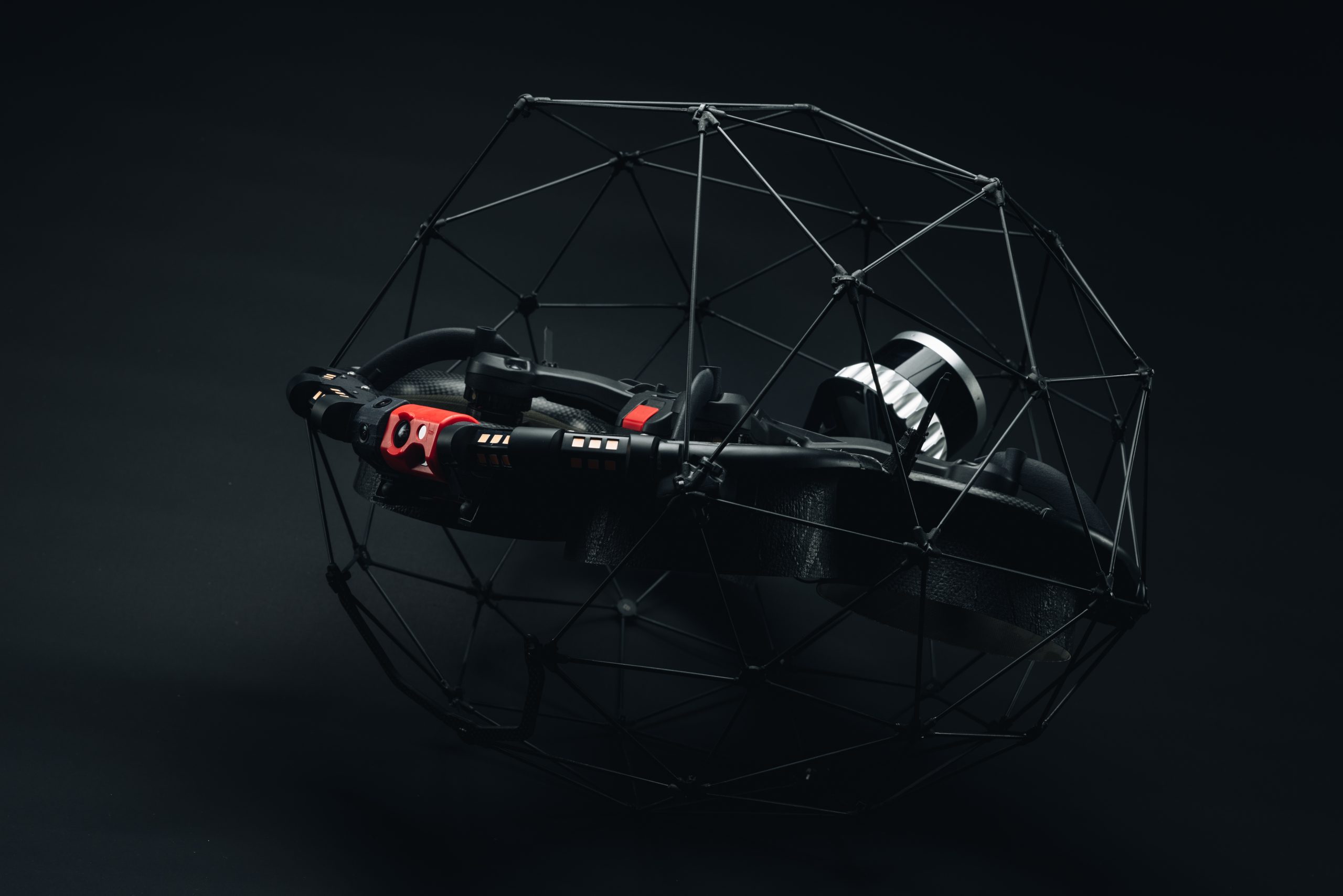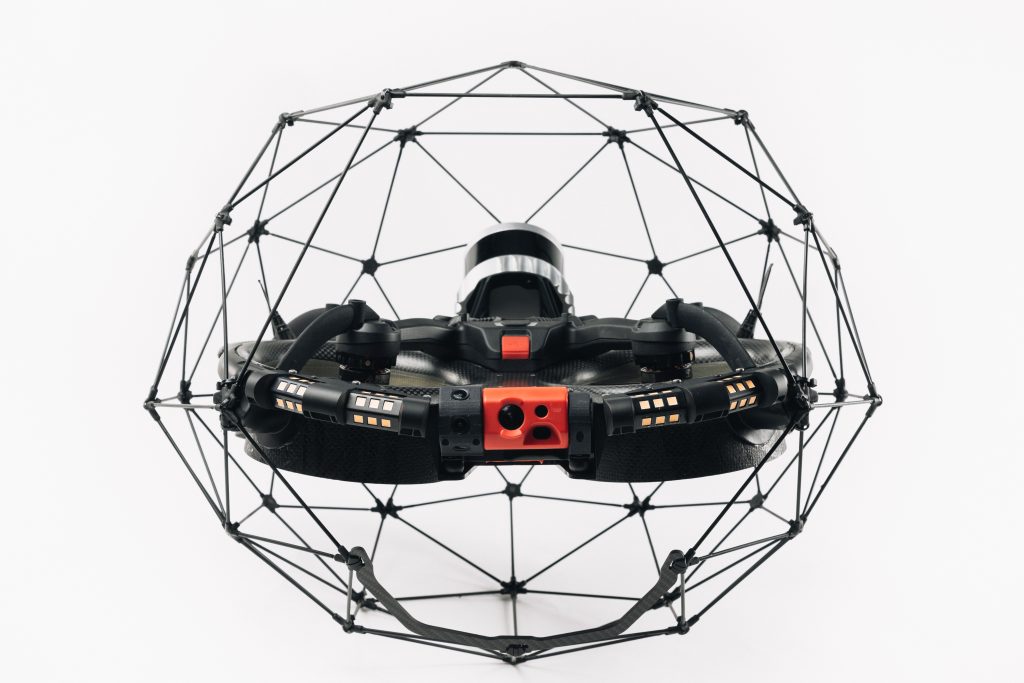Elios 3 is Proving Pure Gold in the Mining & Metals Industries

The mining and metal industries might have been a little slow off the mark to embrace drone technology, but this rapidly growing market is proving a crucial segment for advanced tech. Indeed, the mining market is comfortably edging towards the behemoths of power generation, oil and gas and infrastructure & utilities, in terms of sales. While the metals market is smaller, it nonetheless offers major opportunities and is extremely profitable.
Drone sales of Elios 3 are strong in both industries but in 2023 and with the ongoing evolution of the drone and its associated software (Inspector 4.0) we’ve only scratched the surface of its sales potential.
Both industries present environments that are highly hazardous to humans. The use of technology to replace human-led inspection tasks can remove a large element of this – something mine owners are keen to exploit. Areas, such as underground mining, are exactly the type of locations that the Elios 3 with Inspector 4.0 software are designed to shine.
Underground mining geography is more dangerous and costly than that carried out at the surface. However, the value of the minerals found here – gold, silver, lead, tin, nickel, zinc, copper, lead etc – make for lucrative spoils. Whatever the goal, these mines have many things in common, including:
- Ventilation shafts
- Access shafts and escape routes
- The need for blasting to open or expand new cavities
- The use of heavy-duty industrial equipment, such as floatation cells, stockpile feeders, ball mills and crushers
All of these require accurate and detailed inspections, something that has typically been carried out by humans entering hostile and dangerous spaces. Such tasks present great risk and associated costs, such as:
- Extensive security protocols: including the need for inspectors to wear expensive, time-consuming protective clothing and equipment to enter confined, volatile spaces. The need to erect scaffolding for human entry is both expensive and increases the risk to human life.
- Confined space risk factors: Insecure structures, falling debris, toxic gases and extremely tight spaces are commonplace.
- High manpower costs: Inspection teams typically number 3, 4 or more qualified personnel. This is in addition to those needed to perform the tasks of scaffold erection and pre-entry inspections.
- Asset closure: The need to cease mining during the preparation and inspection phases – which can, in some cases, be as often as every day – impacts heavily on operational costs.
Furthermore, some assets are wholly inappropriate for inspection by traditional methods. This is a major safety concern and one that mining operatives are keen to overcome.
Enter the Elios 3

In addition, the advanced software allows pinpoint data localisation. This means that where maintenance work is deemed necessary, repair teams can be directed to the exact spot. This dramatically reduces the risk of misplaced entry or excessive time searching for the location. The data of areas under surveillance are securely stored for future inspections, allowing operators to quickly return Elios 3 to the exact place for further analysis.
The advantages of using Elios 3 over traditional human inspection are as follows:
- Fast deployment, thanks to removing the preparation required for humans to enter volatile confined spaces. Only the flight path needs to be plotted (method statement, risk assessment and so on) allowing for speedy issuance of any required work permits.
- Removing the element of human error. The HD image capture and high-lumen lighting of the Elios 3 – inspector 4.0 combination allows for data collection that’s far superior to that gathered by the human hand.
- Reducing asset downtime. Elios 3 inspections are typically carried out in a matter of hours, as opposed to the many days needed for more traditional methods. Downtime is typically reduced by at least half the time, if not more.
- Dramatically reducing risk by negating the need for humans to enter hazardous spaces.
- Increasing the quality of inspections, both by the data gathered and the ability to closely inspect assets that were previously challenging or impossible to get close to.
- Reducing the manpower required to carry out inspection tasks.
- Reducing insurance costs by removing the need for human entry to confined spaces.
- Improving maintenance planning, thanks to faster, safer, higher-quality data gathering makes it easier to adopt a more proactive approach to inspection and repair tasks.
Elios 3 inspection data is gathered, analysed and processed immediately, offering huge advantages to the maintenance and repair process. Typical examples of immediate cost-base savings achieved by swapping traditional inspection for the Elios 3 is a saving of $100K to $150K (US) for each hour that an operation doesn’t need to be shut down. A specific inspection of a paper mill tank inspection reduced the shutdown period from 4 days to 6 hours, saving $960K (US).
Some examples of where the Elios 3 is successfully being utilised for asset inspection include:
- Open stopes
- Conveyor belts
- Crushers
- Sag, ball and grinding mills
- Drop raise
- Stockpile feeders
Both the mining and metal industries are struggling against many unique global issues. Environmental demands, spiralling costs due to worldwide events and ever-increasing health and safety regulations are just some of the hurdles to be overcome. Companies are, therefore, looking for effective methods that can increase productivity and reduce operational costs.
Taking advantage of cutting-edge technology, such as Elios 3, is one way that operations can achieve instant cost reductions and improve maintenance and repair processes. Embracing such methods isn’t simply nice to do – in today’s competitive landscape it’s becoming mandatory to retain a market position. The evolution of outdated processes, such as moving from human-entry inspections to semi-automated, is a critical step for operations to retain and improve their place in the 21st-century landscape.
Those who do so are far more likely to remain viable players. Those who don’t face a very real risk of falling behind their competitors and even losing their market position altogether.
Contact us to find out more about the Elios 3 or any of our other Inspection Cameras (RVI), or request a quote online.
